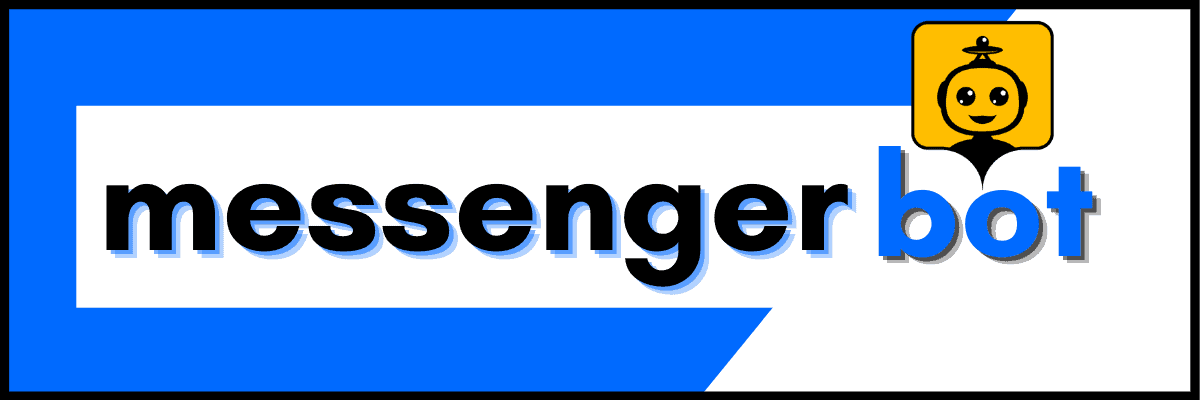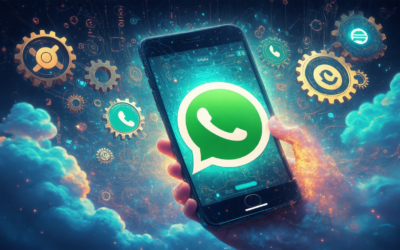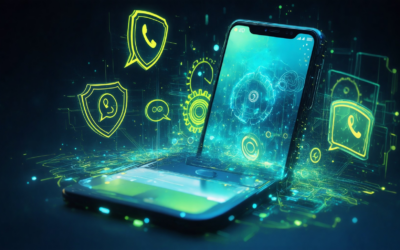Key Takeaways
- AI chatbots enhance customer engagement by providing 24/7 availability and real-time responses, significantly boosting user satisfaction.
- Implementing AI chatbots can streamline operations and reduce costs by automating routine tasks, allowing human agents to focus on complex issues.
- Creating a chatbot with ChatGPT is accessible, enabling businesses to engage users through meaningful conversations and tailored interactions.
- Utilizing free platforms like Messenger Bot and Chatfuel allows businesses to develop effective chatbots without financial investment.
- Future trends in AI chatbots include enhanced NLP capabilities, increased machine learning integration, and a focus on multilingual support to cater to global audiences.
In today’s digital landscape, businesses are increasingly turning to innovative solutions to enhance customer engagement and streamline operations. One of the most effective tools at their disposal is the AI chatbot. This article, titled Crafting an Engaging AI Experience: How to Make AI Chatbot Solutions Work for Your Business, will guide you through the essential steps to make an AI chatbot that not only meets your business needs but also captivates your audience. We will explore the fundamentals of AI chatbots, including their key benefits and how they can transform customer interactions. Additionally, you will learn how to create a chatbot using ChatGPT, build an AI chatbot from scratch, and even discover free platforms to create your own chatbot. As we delve into the future trends in AI chatbots, you’ll gain insights into how these technologies are evolving and what to expect in the coming years. Whether you’re a beginner or looking to enhance your existing chatbot capabilities, this comprehensive guide will equip you with the knowledge and tools necessary to succeed in the world of AI chatbots.
How to make ai chatbot
Understanding the Basics of AI Chatbots
AI chatbots are sophisticated automation tools designed to enhance digital communication by utilizing artificial intelligence. They manage and optimize interactions across various channels, including social media platforms like Facebook and Instagram, as well as websites. The core functionality of AI chatbots includes automated responses, which allow businesses to provide real-time answers to user inquiries without continuous human oversight. This capability not only streamlines engagement but also improves user satisfaction by ensuring timely responses.
Moreover, AI chatbots can facilitate workflow automation, enabling businesses to create dynamic interactions based on specific user behaviors. This tailored approach enhances user engagement and can significantly boost lead generation through interactive messaging strategies. With multilingual support, AI chatbots can communicate in various languages, allowing businesses to reach a diverse global audience effectively.
Key Benefits of Implementing AI Chatbots in Your Business
Integrating AI chatbots into your business strategy offers numerous advantages. Firstly, they provide 24/7 availability, ensuring that customer inquiries are addressed promptly, regardless of the time of day. This constant accessibility can lead to higher customer satisfaction and retention rates. Additionally, AI chatbots can handle multiple interactions simultaneously, which significantly reduces wait times and improves overall efficiency.
Another key benefit is the cost-effectiveness of using AI chatbots. By automating routine tasks, businesses can allocate resources more efficiently, allowing human agents to focus on complex issues that require personal attention. Furthermore, AI chatbots can gather valuable data on user interactions, providing insights that can help refine marketing strategies and improve service delivery. For those looking to explore the features of AI chatbots further, consider checking out the features of Messenger Bot for a comprehensive overview.

How to Create a Chatbot with ChatGPT
Creating a chatbot with ChatGPT is a straightforward process that empowers businesses to enhance customer interactions through intelligent automation. By leveraging the capabilities of ChatGPT, you can build a chatbot that not only responds to user inquiries but also engages them in meaningful conversations. Below, I’ll outline a step-by-step guide to help you get started.
Step-by-Step Guide to Creating a Chatbot with ChatGPT
- Define Your Chatbot’s Purpose: Before diving into development, clearly outline what you want your chatbot to achieve. Whether it’s answering FAQs, providing product recommendations, or assisting with bookings, having a defined purpose will guide your design.
- Choose the Right Platform: Select a platform that supports ChatGPT integration. Messenger Bot is an excellent choice, offering seamless integration and user-friendly features. You can set up your first AI chatbot quickly with their tools.
- Design Conversation Flows: Map out potential user interactions and responses. This helps in creating a natural flow of conversation, ensuring users feel engaged and understood.
- Integrate ChatGPT: Utilize the API provided by OpenAI to integrate ChatGPT into your chatbot. This step involves coding and may require some technical knowledge, but platforms like Messenger Bot simplify this process.
- Test Your Chatbot: Before launching, conduct thorough testing to identify any issues in conversation flow or response accuracy. Gather feedback from users to refine the experience.
- Launch and Monitor: Once satisfied with the performance, launch your chatbot. Continuously monitor interactions and make adjustments based on user feedback and analytics.
Best Practices for Using ChatGPT in Your Chatbot Development
To maximize the effectiveness of your ChatGPT-powered chatbot, consider the following best practices:
- Keep Responses Concise: Users appreciate quick, straightforward answers. Ensure your chatbot provides concise responses that directly address user queries.
- Utilize Contextual Understanding: Leverage ChatGPT’s ability to understand context. Train your chatbot to recognize user intent and respond appropriately, enhancing the overall user experience.
- Incorporate Multilingual Support: If your audience is diverse, consider implementing multilingual capabilities. This allows your chatbot to communicate effectively with users from different backgrounds.
- Regularly Update Content: Keep your chatbot’s knowledge base current. Regular updates ensure that users receive accurate information, especially regarding products or services.
- Analyze User Interactions: Use analytics tools to track user interactions. Understanding user behavior helps in refining your chatbot’s responses and improving engagement.
By following these steps and best practices, you can create a powerful chatbot with ChatGPT that enhances user engagement and streamlines communication. For more insights on chatbot development, explore our Messenger Bot tutorials.
How to Build an AI Chatbot from Scratch
Building an AI chatbot from scratch involves understanding the essential tools and technologies that will enable you to create a functional and effective bot. By leveraging the right resources, you can develop a chatbot that not only meets your business needs but also enhances user engagement and satisfaction.
Essential Tools and Technologies for Building AI Chatbots
To create a robust AI chatbot, you need to utilize various tools and technologies that facilitate development, deployment, and management. Here are some key components:
- Natural Language Processing (NLP) Frameworks: Tools like Brain Pod AI provide advanced NLP capabilities, allowing your chatbot to understand and respond to user queries effectively.
- Development Platforms: Platforms such as Messenger Bot offer user-friendly interfaces for building chatbots without extensive coding knowledge. You can set up your first AI chatbot quickly using their resources.
- Cloud Services: Utilizing cloud services like AWS or Google Cloud can enhance your chatbot’s scalability and performance, ensuring it can handle multiple user interactions simultaneously.
- APIs: Integrating APIs allows your chatbot to access external data and services, enriching user interactions. For instance, you can connect your bot to e-commerce platforms for seamless transactions.
Common Challenges When Building AI Chatbots and How to Overcome Them
While building an AI chatbot can be rewarding, several challenges may arise during the process. Here are some common issues and strategies to address them:
- Understanding User Intent: Accurately interpreting user intent can be difficult. To improve this, invest time in training your chatbot with diverse datasets and continuously refine its NLP capabilities.
- Maintaining Engagement: Users may lose interest if the chatbot’s responses are not engaging. Implementing personalized interactions and utilizing features from Messenger Bot can help keep users engaged.
- Integration Issues: Integrating your chatbot with existing systems can pose technical challenges. Ensure you choose platforms that offer comprehensive support and documentation, such as Brain Pod AI’s Help Center.
- Data Privacy Concerns: As chatbots handle sensitive information, ensuring data privacy is crucial. Implement strong security measures and comply with relevant regulations to build user trust.
Create Your Own Chatbot Free
Creating your own chatbot for free is an exciting opportunity to enhance your business’s digital communication. With various platforms available, you can easily design a chatbot that meets your specific needs without incurring costs. Below, we explore the top free platforms to create your own chatbot and compare free versus paid chatbot solutions.
Top Free Platforms to Create Your Own Chatbot
Several platforms allow you to create your own chatbot without any financial investment. Here are some of the best options:
- Messenger Bot: This platform provides a user-friendly interface to create chatbots that can automate responses on social media and websites. With features like automated responses and workflow automation, it’s perfect for businesses looking to streamline communication. You can start your free trial today.
- Chatfuel: Ideal for Facebook Messenger bots, Chatfuel offers a drag-and-drop interface that simplifies the chatbot creation process. It allows you to build bots without coding, making it accessible for everyone.
- ManyChat: This platform focuses on marketing automation through chatbots. ManyChat provides templates and tools to engage users effectively, especially on social media platforms.
- Dialogflow: Powered by Google, Dialogflow allows you to create conversational interfaces for websites and applications. It supports multiple languages and integrates easily with various platforms.
Comparing Free vs. Paid Chatbot Solutions
When deciding between free and paid chatbot solutions, it’s essential to consider the features and functionalities that best suit your business needs. Here’s a comparison:
- Cost: Free solutions are budget-friendly, making them ideal for startups or small businesses. However, paid options often provide advanced features that can enhance user experience and engagement.
- Features: Free platforms may have limitations in terms of customization and scalability. Paid solutions typically offer more robust functionalities, such as advanced analytics, integrations, and customer support.
- Support: Free platforms often come with limited support options, while paid solutions usually provide dedicated customer service and resources to help you optimize your chatbot.
- Scalability: If your business grows, you may find that free solutions do not meet your evolving needs. Paid options often allow for easier upgrades and additional features as your requirements change.
Ultimately, the choice between free and paid chatbot solutions depends on your specific goals and budget. For those looking to explore chatbot capabilities without financial commitment, starting with a free platform like Messenger Bot can be an excellent way to test the waters.

AI Chatbot Maker Free
When exploring options to make an AI chatbot, selecting the right AI chatbot maker is crucial for achieving your goals. Here are the key features to consider when evaluating different platforms.
Features to Look for in an AI Chatbot Maker
- Ease of Use: A user-friendly interface allows you to create and manage your chatbot without extensive technical knowledge. Look for drag-and-drop functionality and intuitive design.
- Integration Capabilities: Ensure the chatbot maker can integrate seamlessly with your existing systems, such as CRM tools, social media platforms, and e-commerce solutions. This is essential for optimizing customer interactions.
- Customization Options: The ability to customize your chatbot’s appearance and responses is vital. Choose a platform that allows you to tailor the chatbot to reflect your brand’s voice and personality.
- Analytics and Reporting: A good AI chatbot maker should provide insights into user interactions and performance metrics. This data is invaluable for refining your chatbot’s effectiveness over time.
- Multilingual Support: If your business operates globally, look for a chatbot maker that offers multilingual capabilities to cater to diverse audiences.
How to Choose the Right AI Chatbot Maker for Your Needs
Selecting the right AI chatbot maker involves assessing your specific requirements and comparing various options. Here are some steps to guide your decision:
- Define Your Objectives: Clearly outline what you want to achieve with your chatbot. Whether it’s lead generation, customer support, or engagement, having defined goals will help you choose the right features.
- Research Available Options: Explore different platforms, such as Brain Pod AI, which offers a range of AI services, including chatbot solutions. Compare their features, pricing, and user reviews.
- Test the Platforms: Many chatbot makers offer free trials. Take advantage of these to test the functionality and see if it meets your needs before committing.
- Consider Long-Term Scalability: Choose a chatbot maker that can grow with your business. Ensure it offers features that can adapt as your needs evolve.
By carefully evaluating these factors, you can select an AI chatbot maker that aligns with your business goals and enhances your digital communication strategy.
How to make a AI chatbot in Python
Creating an AI chatbot in Python is an exciting venture that allows you to harness the power of artificial intelligence to enhance user interactions. Python, with its simplicity and extensive libraries, is an ideal language for developing chatbots. Below, I’ll guide you through the essential steps to get started.
A Beginner’s Guide to Making an AI Chatbot in Python
To make an AI chatbot in Python, follow these foundational steps:
- Set Up Your Environment: Begin by installing Python on your machine. Use a package manager like pip to install necessary libraries such as NLTK for natural language processing and Rasa for building conversational AI.
- Define Your Chatbot’s Purpose: Clearly outline what you want your chatbot to achieve. Whether it’s answering FAQs, booking appointments, or providing customer support, having a defined purpose will guide your development.
- Design the Conversation Flow: Map out how interactions will occur. Use flowcharts to visualize user inputs and bot responses, ensuring a smooth conversational experience.
- Implement Natural Language Processing: Utilize libraries like NLTK or spaCy to process user inputs. This will help your chatbot understand and respond to queries more effectively.
- Test and Iterate: After building your chatbot, conduct thorough testing. Gather feedback and make necessary adjustments to improve user experience.
For a more detailed guide, check out our AI chatbot setup guide.
Advanced Techniques for Enhancing Your Python Chatbot
Once you have a basic chatbot up and running, consider these advanced techniques to enhance its capabilities:
- Integrate Machine Learning: Implement machine learning algorithms to enable your chatbot to learn from interactions and improve over time. Libraries like Scikit-learn can be beneficial for this purpose.
- Utilize APIs: Enhance your chatbot’s functionality by integrating APIs. For instance, you can connect to weather services, booking systems, or even payment gateways to provide a richer user experience.
- Multilingual Support: Consider adding multilingual capabilities to cater to a broader audience. Libraries like googletrans can help translate user inputs and responses.
- Analytics and Feedback: Incorporate analytics tools to track user interactions and gather insights. This data can help you refine your chatbot’s performance and user satisfaction.
By implementing these advanced techniques, you can create a more robust and engaging AI chatbot that meets the needs of your users effectively. For further learning, explore Brain Pod AI for additional resources and tools.
Future Trends in AI Chatbots
As we look ahead, the landscape of AI chatbots is evolving rapidly, driven by advancements in technology and changing consumer expectations. Understanding these trends is crucial for businesses aiming to leverage AI chatbots effectively.
The Role of AI Chatbots in Customer Service Evolution
AI chatbots are transforming customer service by providing immediate, 24/7 support, which enhances user experience significantly. With platforms like Messenger Bot, businesses can automate responses to common inquiries, allowing human agents to focus on more complex issues. This shift not only improves efficiency but also reduces operational costs.
- Personalization: AI chatbots are increasingly capable of delivering personalized interactions by analyzing user data and preferences. This capability allows businesses to tailor responses, enhancing customer satisfaction.
- Integration with Other Technologies: The future of AI chatbots will see deeper integration with CRM systems and other business tools, streamlining workflows and improving data management.
- Multilingual Support: As businesses expand globally, the demand for multilingual chatbots will grow. AI chatbots that can communicate in various languages will be essential for reaching diverse audiences.
Predictions for AI Chatbot Development in the Next Five Years
Looking forward, several key predictions are shaping the future of AI chatbot development:
- Enhanced Natural Language Processing (NLP): Advances in NLP will enable chatbots to understand and respond to user queries with greater accuracy, making interactions feel more human-like.
- Increased Use of Machine Learning: AI chatbots will leverage machine learning to improve their responses over time, learning from past interactions to provide better service.
- Focus on Security and Privacy: As data privacy concerns grow, chatbot developers will prioritize security features to protect user information, ensuring compliance with regulations.
In conclusion, the future of AI chatbots is bright, with innovations that promise to enhance customer engagement and streamline business operations. By staying informed about these trends, businesses can better prepare to implement effective AI chatbot solutions.




